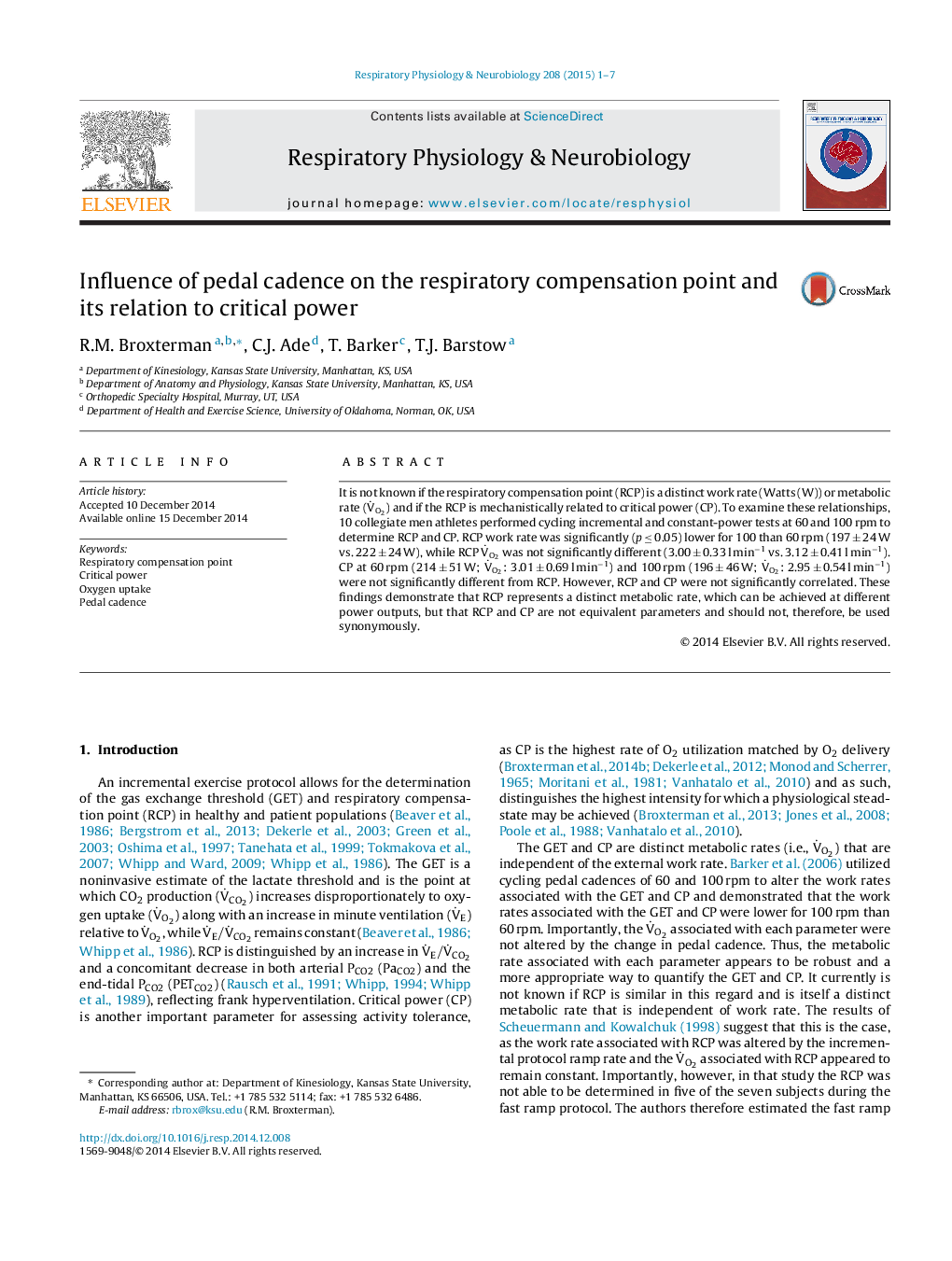| کد مقاله | کد نشریه | سال انتشار | مقاله انگلیسی | نسخه تمام متن |
|---|---|---|---|---|
| 5925943 | 1571320 | 2015 | 7 صفحه PDF | دانلود رایگان |
- VËO2 associated with RCP was not significant different between 60 and 100Â rpm.
- Neither work rates nor VËO2 at RCP and CP were different across or within rpm.
- There was no relationship between work rates or VËO2 values at RCP compared to CP.
- TRCP is more appropriately determined as a metabolic rate than a work rate.
- RCP and CP are not synonymous despite often occurring at similar intensities.
It is not known if the respiratory compensation point (RCP) is a distinct work rate (Watts (W)) or metabolic rate (VËO2) and if the RCP is mechanistically related to critical power (CP). To examine these relationships, 10 collegiate men athletes performed cycling incremental and constant-power tests at 60 and 100 rpm to determine RCP and CP. RCP work rate was significantly (p â¤Â 0.05) lower for 100 than 60 rpm (197 ± 24 W vs. 222 ± 24 W), while RCP VËO2 was not significantly different (3.00 ± 0.33 l minâ1 vs. 3.12 ± 0.41 l minâ1). CP at 60 rpm (214 ± 51 W; VËO2: 3.01 ± 0.69 l minâ1) and 100 rpm (196 ± 46 W; VËO2: 2.95 ± 0.54 l minâ1) were not significantly different from RCP. However, RCP and CP were not significantly correlated. These findings demonstrate that RCP represents a distinct metabolic rate, which can be achieved at different power outputs, but that RCP and CP are not equivalent parameters and should not, therefore, be used synonymously.
Journal: Respiratory Physiology & Neurobiology - Volume 208, March 2015, Pages 1-7
